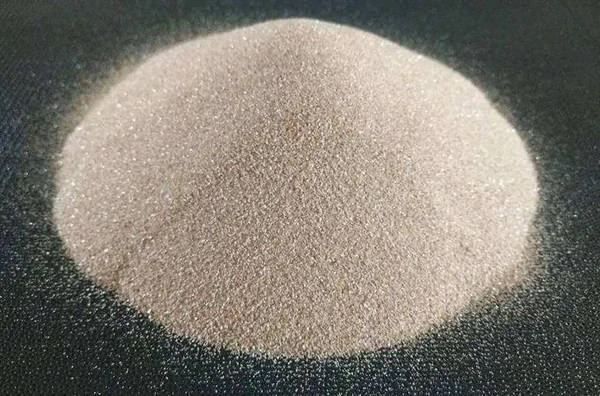Ceramic sand has emerged as a pivotal material in the high-tech industry, particularly within 3C electronics, which encompasses consumer electronics, computers, and communication devices. This abrasive material is renowned for its ability to enhance surface quality and durability in manufacturing processes. As global demand for precision-engineered products rises, ceramic sand offers reliable solutions for achieving superior finishes without compromising on efficiency.
In the context of 3C electronic high-tech products, ceramic sand plays a critical role in surface preparation and cleaning. Its unique attributes make it ideal for applications where precision and cleanliness are paramount, helping manufacturers meet stringent quality standards in a competitive market.
Ceramic sand is widely used for surface cleaning and preparation in various sectors, with significant applications in 3C digital hardware shells, rubber, plastic molds, boilers, and heat exchangers. In 3C electronics, it ensures that components like smartphone casings and computer parts achieve a flawless finish, free from contaminants that could affect performance.
One major application is in the aviation industry, where ceramic sand is employed for sandblasting to remove residues and prepare surfaces for coatings. This process enhances adhesion and longevity, crucial for aircraft components that must withstand extreme conditions.
Beyond aviation, ceramic sand supports boiler and heat exchanger maintenance by effectively cleaning internal surfaces. This prevents buildup that could lead to inefficiencies or failures, making it a go-to choice for industrial maintenance teams.
In the broader manufacturing landscape, ceramic sand's versatility extends to automotive and medical device production, where it aids in creating surfaces that meet regulatory requirements for hygiene and durability.
Ceramic sand stands out due to its superior characteristics, making it more effective than common abrasives like steel shots or glass beads. Its uniform particle size distribution ensures consistent results, minimizing variations in surface treatment outcomes.
One key advantage is its low breakage rate, which allows for repeated use without significant degradation. This reusability reduces material costs and waste, appealing to environmentally conscious manufacturers in the B2B sector.
Compared to steel shots, ceramic sand offers similar blasting strength but with lower surface roughness. This is particularly beneficial in scenarios where steel debris could contaminate sensitive components, such as in electronics assembly.
These advantages position ceramic sand as an ideal material for industries prioritizing precision and sustainability, especially in the fast-paced world of 3C electronics.
The effectiveness of ceramic sand stems from its distinctive physical and chemical properties, which set it apart from other abrasives. Its high particle density enables rapid and efficient grinding, allowing it to match the strength of steel shots while avoiding associated drawbacks.
Key properties include excellent resistance to high temperatures, making it suitable for applications involving thermal stress. Additionally, its low thermal expansion coefficient prevents warping or cracking during intense processes.
Ceramic sand also boasts high insulation capabilities, which are essential in electronic manufacturing to avoid electrical interference. Its corrosion resistance ensures longevity in harsh environments, such as those found in aerospace and IT industries.
These properties not only improve processing efficiency but also contribute to the development of advanced high-tech products, where reliability is non-negotiable.
In the aviation and aerospace sectors, ceramic sand's role is indispensable for preparing components that demand precision and reliability. Its ability to deliver clean, residue-free surfaces supports the assembly of aircraft parts that must endure high altitudes and speeds.
Within the electronic industry, particularly 3C products, ceramic sand facilitates the production of sleek, durable devices. For instance, it is used to texture smartphone screens and laptop housings, ensuring scratch resistance and visual appeal.
The mechanical sector benefits from ceramic sand in tool manufacturing, where it enhances surface hardness and reduces wear. In the rapidly evolving IT industry, its properties enable the creation of advanced components for data centers and networking equipment.
Moreover, ceramic sand's molecular structure and crystal lattice provide stability in dynamic applications, such as in piezoelectric sensors for smart devices. This makes it a cornerstone material in the ongoing digital transformation, driving innovation in global supply chains.
As industries like aerospace and IT continue to grow, the demand for materials like ceramic sand is expected to rise, fostering new opportunities in international trade and manufacturing partnerships.
Here are some frequently asked questions about ceramic sand and its applications:
In summary, ceramic sand's wide-ranging applications and superior properties make it an invaluable asset in 3C electronic high-tech products and beyond. From enhancing surface quality in digital hardware to supporting critical processes in aviation and IT, this material drives efficiency, sustainability, and innovation. As manufacturers navigate global trade challenges, embracing ceramic sand can lead to better performance and competitive advantages in the evolving high-tech landscape.
Tags: Black Silicon Carbide, White Fused Alumina, Brown Fused Alumina, Pink Fused Alumina, Black Fused Alumina